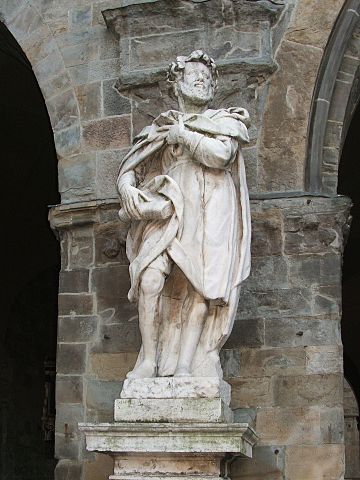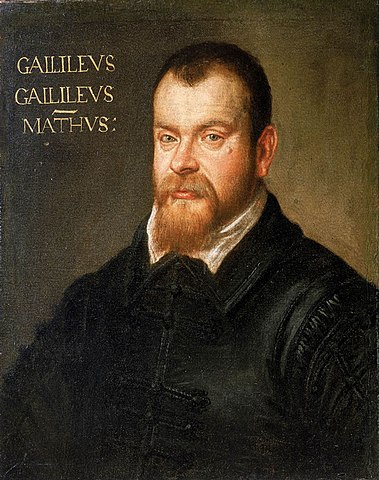
By Mark Davie
Torquato Tasso, who died in Rome on 25 April 1595, desperately wanted to write a classic. The son of a successful court poet who had been brought up on the Latin classics, he had a lifelong ambition to write the epic poem which would do for counter-reformation Italy what Virgil’s Aeneid had done for imperial Rome. From his teenage years on, he worked on drafts of a poem on the first crusade which had ‘liberated’ Jerusalem from its Muslim rulers in 1099, a subject which he deemed appropriate for a Christian epic. His ambition reflected the climate in which he grew up: his formative years (he was born in 1544) saw a newly assertive orthodoxy both in literary theory (dominated by Aristotle’s Poetics, published in a Latin translation in 1536) and in religion (the Council of Trent, convened to meet the challenge of Luther’s revolt, was in session intermittently between 1545 and 1563). Those who saw Aristotle’s text as normative insisted that an epic must deal with a single historical theme in a uniformly elevated style, while the decrees emanating from Trent re-asserted the authority of the church and took an increasingly hard line against heresy. As he worked on his poem, Tasso was nervously anxious not to offend either of these constituencies.
 The trouble was that his most immediate model – one whose influence he could not have ignored even if he had wanted to – was very far from conforming to the new orthodoxies. Ludovico Ariosto’s Orlando furioso, a multilayered narrative loosely (very loosely) located in the historical setting of Charlemagne’s wars against the Moors in Spain, was published in 1532, and was written in more easy-going times. Ariosto could criticize the Italian rulers of his day, including the papacy, and introduce episodes into his poem which provocatively questioned conventional values, whether rational, social, or sexual, without worrying about the consequences. He could be equally casual about literary proprieties: his freewheeling poem indulged in constant romantic deviations from its main plot, such as it was, and its tone was teasingly elusive, always maintaining an ironic distance between the narrator and his subject-matter.
The trouble was that his most immediate model – one whose influence he could not have ignored even if he had wanted to – was very far from conforming to the new orthodoxies. Ludovico Ariosto’s Orlando furioso, a multilayered narrative loosely (very loosely) located in the historical setting of Charlemagne’s wars against the Moors in Spain, was published in 1532, and was written in more easy-going times. Ariosto could criticize the Italian rulers of his day, including the papacy, and introduce episodes into his poem which provocatively questioned conventional values, whether rational, social, or sexual, without worrying about the consequences. He could be equally casual about literary proprieties: his freewheeling poem indulged in constant romantic deviations from its main plot, such as it was, and its tone was teasingly elusive, always maintaining an ironic distance between the narrator and his subject-matter.
The Orlando furioso was hardly a model for the poem Tasso set out to write; and yet it was hugely popular, and Tasso clearly read and admired it as much as anyone. So Tasso’s poem, as he reluctantly agreed to publish it in 1581 after 20 years of writing and rewriting, embodies the tension between his declared aim and the poem his instincts impelled him to write. It would be hard to argue that the Gerusalemme liberata (The Liberation of Jerusalem) is an unqualified success as a celebration of counter-reformation Christianity; instead it is something much more interesting, an expression of the inner contradictions of late sixteenth-century culture as they were felt by a sensitive – sometimes hyper-sensitive – and gifted poet.
Some of Tasso’s drafts had leaked out during the poem’s long gestation and had been published without his consent, so the poem was eagerly awaited, and it immediately had its devotees. Not everyone, however, was impressed. Among those who were not was Galileo, who wrote a series of acerbic notes on the poem some time before 1609. His criticisms are mostly on details of language and style, but in one revealing comment he compares Tasso’s poetic conceits to ostentatiously difficult dance steps, which are pleasing only if they are ‘carried through with supreme accomplishment, so that their gracefulness overrides their affectation’. Grazia versus affettazione: the terms are taken from Castiglione’s Book of the Courtier, that indispensable guide to Renaissance manners which decreed that the courtier’s accomplishments should be displayed with an appearance of effortless nonchalance. Tasso’s offence against courtly manners was that he tried too hard.
The Gerusalemme liberata is indeed full of unresolved tensions – between historical chronicle and romantic fantasy, sensuality and solemnity, the broad sweep of history and the playing out of individual passions. They are what bring the poem to life today, long after the crusades have lost their appeal as a topic for celebration. Galileo rebukes one of Tasso’s heroes for being too easily deflected from his duty by love: ‘Tancredi, you coward, a fine hero you are! You were the first to be chosen to answer Argante’s challenge, and then when you come face to face with him, instead of confronting him you stop to gaze on your lady love’. Tancredi does admittedly cut a rather ludicrous figure when he is transfixed by catching sight of Clorinda just as he is about to accept the Saracen champion’s challenge, but what Galileo didn’t realise was that the very vehemence of his indignation was a testimony to the effectiveness of Tasso’s writing. Plenty of poets wrote about how love mocks the pretentions of would-be heroes, but few dramatised it so effectively – and only Tasso could have written the scene, memorably set to music by Monteverdi, where Tancredi meets Clorinda in single combat, her identity (and her gender) concealed under a suit of armour, and recognises her only when he has mortally wounded her and he baptises her before she dies in his arms.
Galileo was wrong about Tasso’s poem. The very qualities which he deplored make it a classic which inspired poets from Spenser and Milton to Goethe and Byron, composers from Monteverdi to Rossini, and painters from Poussin to Delacroix, and which is still a compelling read today.
Mark Davie taught Italian at the Universities of Liverpool and Exeter. His interests focus particularly on the relation between learned and popular culture, and between Latin and the vernacular, in Italy in the Renaissance. In Oxford World’s Classics he has written the introduction and notes to Max Wickert’s translation of The Liberation of Jerusalem, and has translated (with William R. Shea) the Selected Writings of Galileo.
For over 100 years Oxford World’s Classics has made available the broadest spectrum of literature from around the globe. Each affordable volume reflects Oxford’s commitment to scholarship, providing the most accurate text plus a wealth of other valuable features, including expert introductions by leading authorities, voluminous notes to clarify the text, up-to-date bibliographies for further study, and much more. You can follow Oxford World’s Classics on Twitter, Facebook, or here on the OUPblog. Subscribe to only Oxford World’s Classics articles on the OUPblog via email or RSS.
Subscribe to the OUPblog via email or RSS.
Subscribe to only literature articles on the OUPblog via email or RSS.
Image credit: Statue of Torquato Tasso by Luigi Chiesa. CC-BY-3.0 via Wikimedia Commons
The post How to write a classic appeared first on OUPblog.



